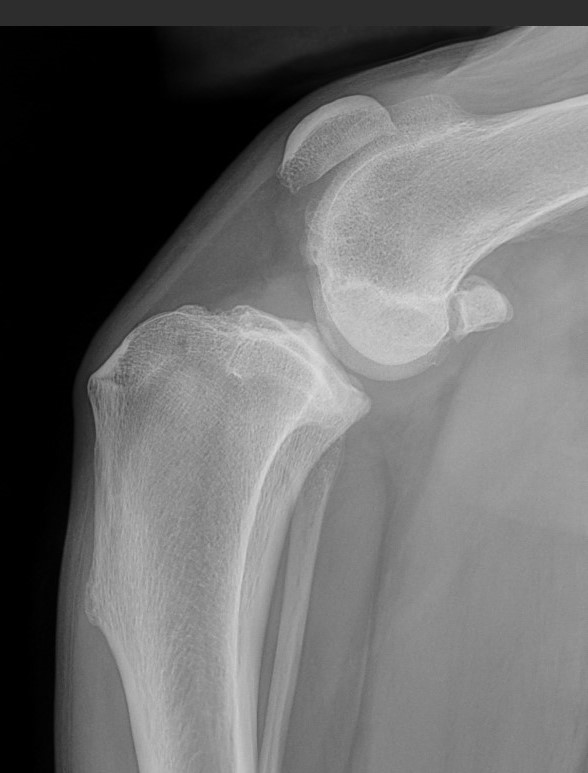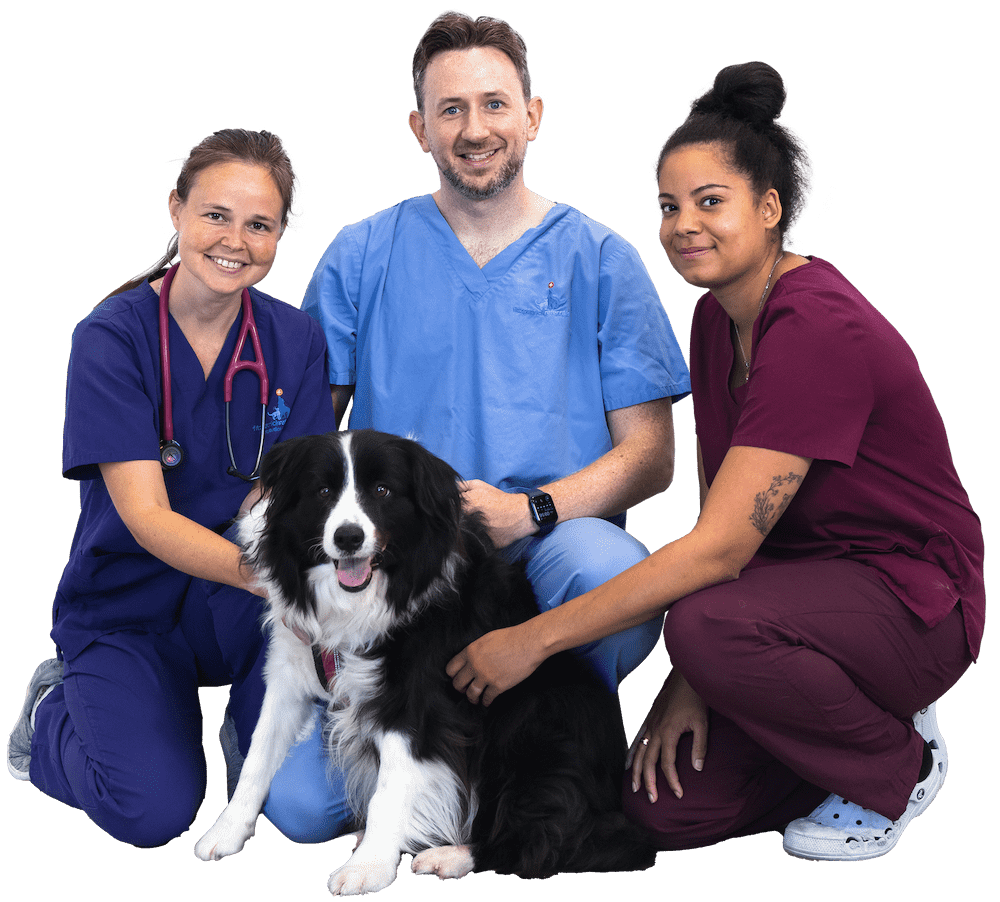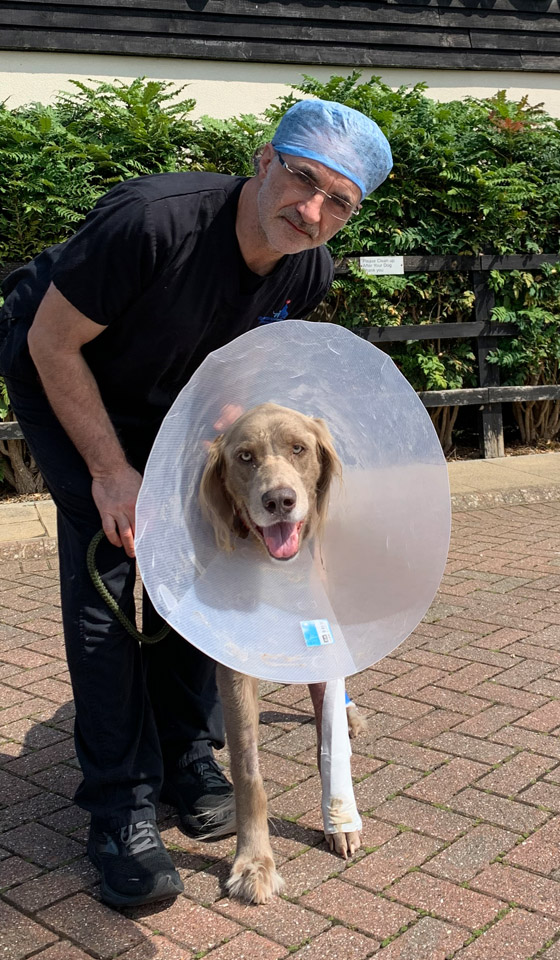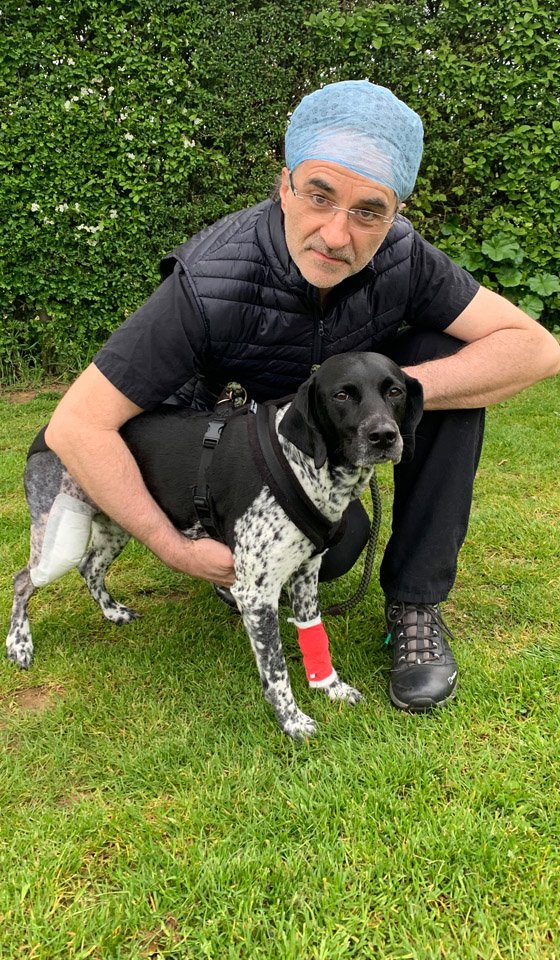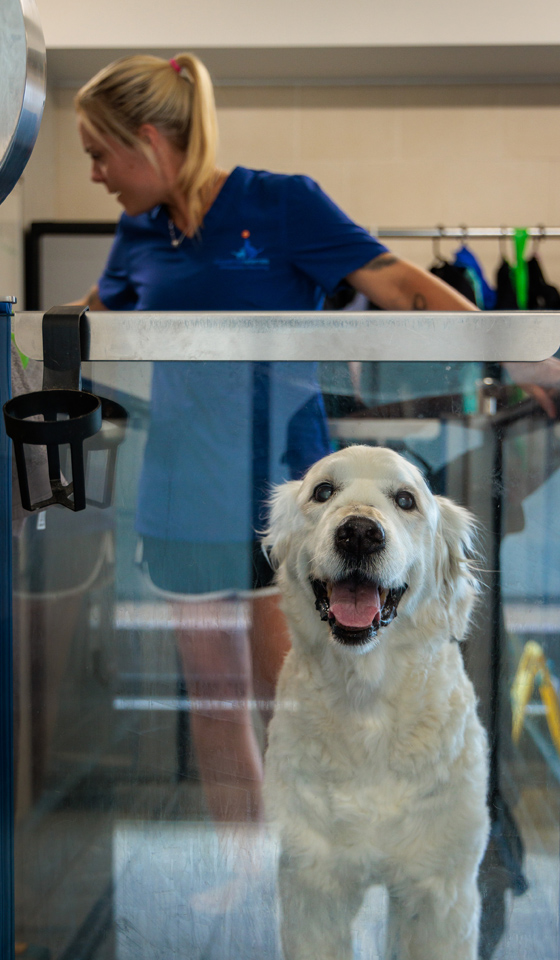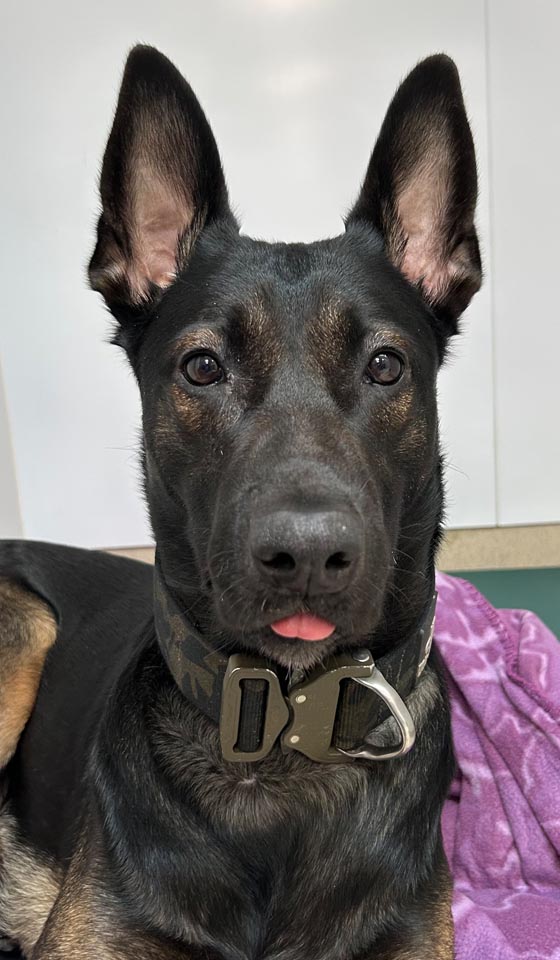Rehabilitation of cranial cruciate ligament disease
Cranial cruciate ligament disease may be treated either conservatively or surgically. The decision to treat your dog’s cranial cruciate ligament disease with conservative or surgical management will very much depend on the stability of the stifle joint (knee) and the severity of clinical signs. Stability can be assessed by your primary care vet or if referred, by one of our orthopaedic clinicians.
Conservative rehabilitation
If your dog is being treated conservatively many dogs benefit from rehabilitation to protect the stifle joint and prevent further injury or stress to the joint. If your dog is referred to our rehabilitation service our chartered physiotherapists look closely at how your dog functions with the condition and the effect it has on the body as a whole. It is vital that the quadriceps and hamstring muscle groups are maintained as they control flexion and extension of the stifle joint. If these muscles become weak the stifle can become vulnerable and at risk of further injury.
Physiotherapy aims
Whilst your dog already has existing CCL disease and is being managed conservatively, there is a risk of “flare-ups” or exacerbation of clinical signs following trauma or inappropriate exercise. At this stage, the aim would be to control the inflammation and surrounding muscle spasm. It is also important to encourage careful limb use and prevent muscle atrophy. The soft tissues also need to be maintained. If your dog responds positively to the conservative rehabilitation programme, the aims can be adjusted to include the above with greater limb loading, further limb strengthening and increased cardiovascular fitness. Restricted walking between prescribed exercise times is advised to ensure the knee isn’t overloaded alongside the specific controlled rehabilitation exercises.
Physiotherapy options
Ice therapy, compression, massage and stretches are initially employed to reduce any swelling and pain and to care for the soft tissues. Specific strengthening exercises are then added as is hydrotherapy in the pool or in the underwater treadmill. Advice for caring for your dog at home and how to avoid any factors that might aggravate the condition such as slippery floors, jumping up and in and out of things will be advised by your physiotherapist. A gradual introduction of off-lead exercise will then be advised and activities that stimulate core stability. Many dogs require ongoing rehabilitation to prevent further problems and maintain limb strength. This ongoing form of rehabilitation quite often is carried out in the water.
Should your dog deteriorate at any point during a conservative management programme it is important you contact your chartered physiotherapist so an appointment with your orthopaedic clinician can be arranged. Conservative rehabilitation is not suitable for all dogs, some require surgical intervention to address cranial cruciate ligament disease, therefore, it is important your dog is reassessed to evaluate stifle stability as soon as you have concerns.
The table below is an example of a conservative rehabilitation plan for cranial cruciate ligament disease:*
| Timescale | Physiotherapy aims | Physiotherapy treatment options |
|---|---|---|
| 0-4 weeks | Reduce inflammation |
|
| Reduce muscular guarding |
| |
| Increase strength |
| |
| Increase limb loading and regain normal movement patterns |
| |
| Maintain soft tissue length and flexibility |
| |
| Management at home |
| |
| 4-6 weeks | Continue as above | Progression of home exercise programme to challenge balance, body awareness and strength |
| Advice on maintaining restricted exercise when dog is feeling better | ||
| 6 – 12 weeks | Increase exercise tolerance |
|
| Continue to increase core stability | Home exercise programme | |
| 12 weeks + | Return to full function | Progress to off-lead exercise and previous exercise level |
Surgical rehabilitation
Should your dog require stifle surgery, rehabilitation is implemented in the immediate postoperative phase by one of our chartered physiotherapists.
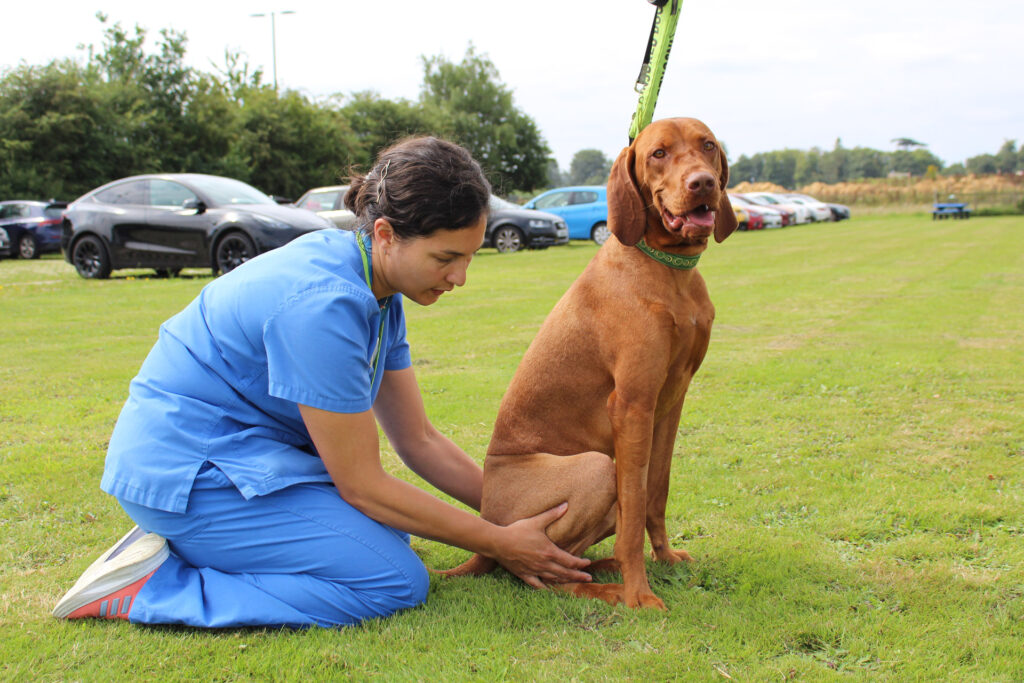
Patients are often assessed 24 hours following surgery while still hospitalised for the administration of ice therapy to address any swelling. This can be repeated at various intervals throughout the day until your dog goes home. Laser therapy can assist with swelling reduction and pain relief. Careful joint range of motion (ROM) exercises can also be employed to maintain mobility. Stretches are also useful in preventing soft tissue tightness.
After approximately 4 days, specific limb loading exercises are introduced as are core stability techniques. Specific quadriceps and hamstring exercises start carefully at this stage.
Once your dog reaches weeks 2-6 following surgery, further progression of the rehabilitation programme is advised. Targeted exercises continue and further balance and coordination work is provided. Gait re-education is constant and at this stage, hydrotherapy can be introduced. This most likely will take place on the underwater treadmill. Various home exercises are given as is specific advice on how to exercise and manage your pet’s environment at home. This programme is constantly re-evaluated and adjusted to allow the patient to return to normal function.
The table below is an example of a surgical rehabilitation plan for cranial cruciate ligament disease:*
| Timescale | Physiotherapy aims | Physiotherapy treatment options |
|---|---|---|
| 1-2 weeks | Reduce inflammation |
|
| Reduce muscular guarding |
| |
| Maintain soft tissue length and flexibility | Exercise programme – passive movements, stretches, joint mobilisations | |
| Increase use of limb and correct gait pattern |
| |
| Improve independence with postural sets | Exercise program – lying, sitting, standing with support if required | |
| Increase strength | Exercise programme | |
| 2-4 weeks | Progress strengthening | Exercise programme |
| Ensure correct movement patterning | Exercises to address any movement compensations | |
| Maintain full passive range of movement in all joints and soft tissue flexibility | Exercises and stretches | |
| 4-6 weeks | Increase strength |
|
| 6-12 weeks | Increase exercise tolerance |
|
| 12 weeks + | Return to previous exercise level | Advice regarding the progression of exercise, aiming to off-lead advance strengthening and proprioceptive training specific to the dog’s functional needs |
*Please note that rehabilitation plans should only be followed under the guidance of a qualified rehabilitation professional, who will be able to provide a tailored plan based on the individual patient’s rehabilitation needs.
